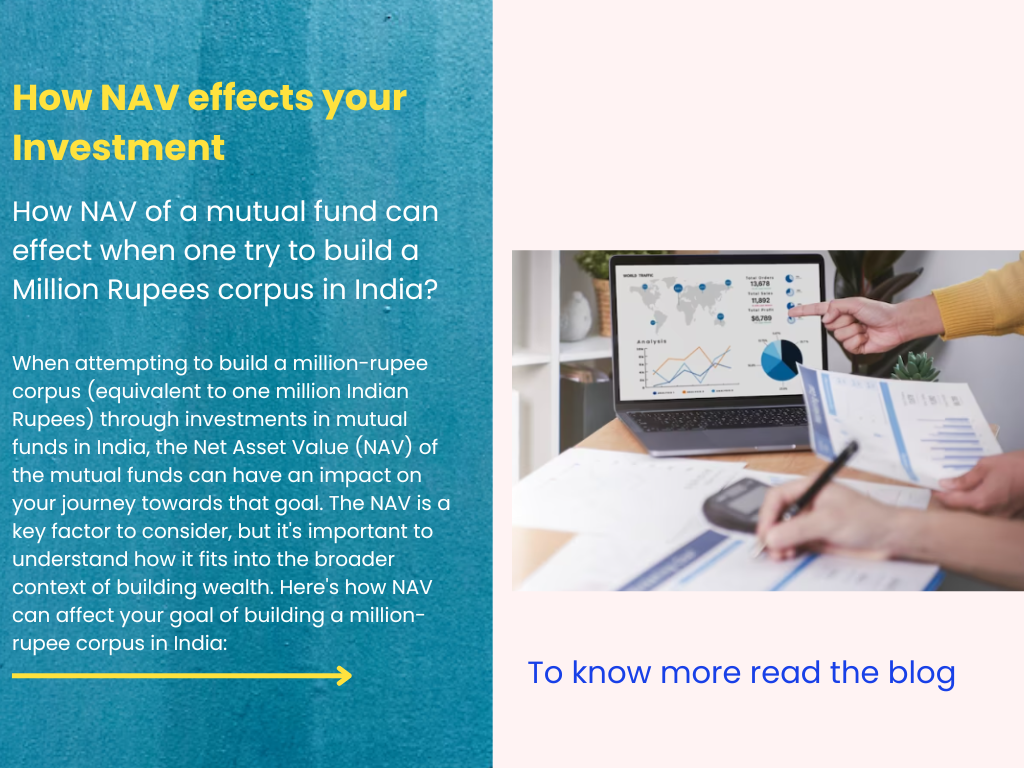How NAV of a mutual fund can effect when one try to build a Million Rupees corpus in India?
When attempting to build a million-rupee corpus (equivalent to one million Indian Rupees) through investments in mutual funds in India, the Net Asset Value (NAV) of the mutual funds can have an impact on your journey towards that goal. The NAV is a key factor to consider, but it's important to understand how it fits into the broader context of building wealth. Here's how NAV can affect your goal of building a million-rupee corpus in India:
Initial Investment: The NAV determines the price at which you buy units of a mutual fund. A higher NAV means you'll get fewer units for the same investment amount, and a lower NAV means you'll get more units. However, the total value of your investment depends not only on the number of units but also on the performance of the fund's underlying assets.
Potential Returns: While a mutual fund with a higher NAV might appear more expensive, it's essential to consider the fund's historical performance and investment strategy. A fund with a higher NAV could have higher-quality assets that potentially generate better returns over time.
Expense Ratio Impact: The expense ratio of a mutual fund, which represents the annual fees charged by the fund, affects its NAV over time. Higher expense ratios can eat into your returns and slow down the growth of your investment. Therefore, funds with lower expense ratios are generally more favorable for long-term wealth accumulation.
Investment Horizon: Building a million-rupee corpus is a long-term goal. Over time, the impact of the initial NAV level becomes less significant as the performance of the mutual fund takes center stage. A focus on consistent contributions and patient investing is crucial.
Systematic Investment Plans (SIPs): If you're investing through SIPs, the impact of NAV fluctuations is smoothed out due to the averaging effect. In a SIP, you invest a fixed amount at regular intervals, buying more units when the NAV is low and fewer units when the NAV is high. This strategy helps reduce the impact of market volatility.
Market Timing: Trying to time the market based solely on NAV can be challenging and risky. Attempting to predict when NAV will be at its lowest to buy and at its highest to sell can lead to missed opportunities and losses.
Diversification: Building a substantial corpus requires diversifying your investments across various asset classes and mutual funds. Relying on a single fund's NAV is not sufficient for achieving your goal.
Professional Advice: Consult with a financial advisor who can guide you in selecting mutual funds that align with your risk tolerance, investment horizon, and financial goals.
In conclusion, while the NAV of mutual funds in India is important, it's just one factor among several that impact your journey towards building a million-rupee corpus. A well-rounded approach includes selecting funds with a track record of good performance, managing expenses, diversifying your investments, and maintaining a long-term perspective. By focusing on consistent contributions and making informed investment decisions, you can work toward achieving your financial goals.


